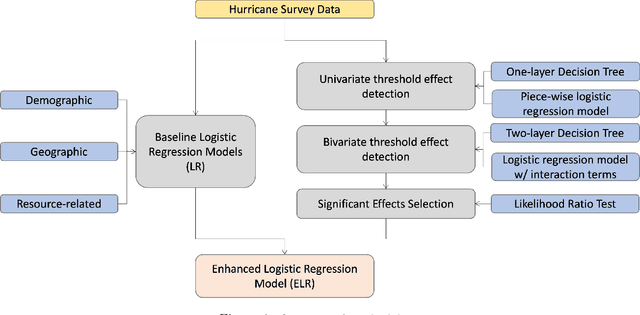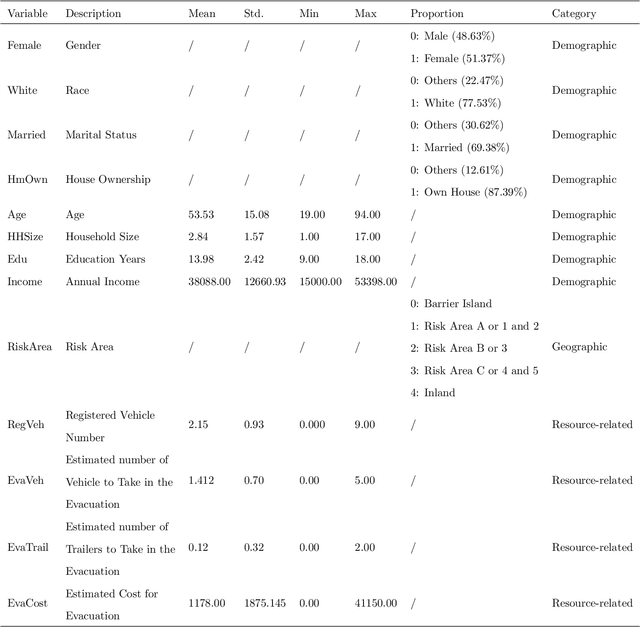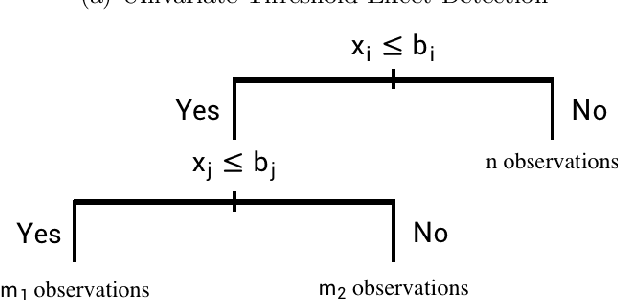Predicting Hurricane Evacuation Decisions with Interpretable Machine Learning Models
Paper and Code
Mar 12, 2023



The aggravating effects of climate change and the growing population in hurricane-prone areas escalate the challenges in large-scale hurricane evacuations. While hurricane preparedness and response strategies vastly rely on the accuracy and timeliness of the predicted households' evacuation decisions, current studies featuring psychological-driven linear models leave some significant limitations in practice. Hence, the present study proposes a new methodology for predicting households' evacuation decisions constructed by easily accessible demographic and resource-related predictors compared to current models with a high reliance on psychological factors. Meanwhile, an enhanced logistic regression (ELR) model that could automatically account for nonlinearities (i.e., univariate and bivariate threshold effects) by an interpretable machine learning approach is developed to secure the accuracy of the results. Specifically, low-depth decision trees are selected for nonlinearity detection to identify the critical thresholds, build a transparent model structure, and solidify the robustness. Then, an empirical dataset collected after Hurricanes Katrina and Rita is hired to examine the practicability of the new methodology. The results indicate that the enhanced logistic regression (ELR) model has the most convincing performance in explaining the variation of the households' evacuation decision in model fit and prediction capability compared to previous linear models. It suggests that the proposed methodology could provide a new tool and framework for the emergency management authorities to improve the estimation of evacuation traffic demands in a timely and accurate manner.
 Add to Chrome
Add to Chrome Add to Firefox
Add to Firefox Add to Edge
Add to Edge